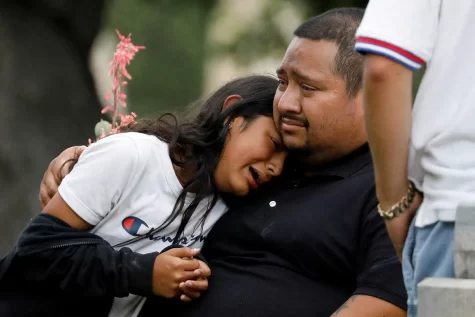How Climate Change is Contributing to the Global Hunger Crisis
Climate change has been affecting our planet for years and, although it is a huge problem in and of itself, it also causes several other problems in the world to arise and worsen. The warming atmosphere is detrimental to plants and livestock all over the globe and cause several countries to have food insecurity. To be food insecure is to have a lack of consistent access to enough food for each person in a household to live an active and healthy life. One of the biggest dangers for the world is food shortages developing on multiple continents at once. And being that climate change affects the entire world, it is a major accelerator of these severe food shortages.
As if climate change isn’t already harming the environment enough, it is causing some regions to become progressively less suitable for agriculture. According to actionagainsthunger.org, around the world, more than enough food is produced to feed the global population but there are still as many as 811 million people that still go hungry. One important reason is the growing demand for meat and dairy products that comes with the increasing wealth in some parts of the world. This is caused by climate change and natural disasters but are also more likely to affect poorer parts of the world rather than wealthier parts. It has been proven that families in poorer countries spend up to 80% of their income on food, and in the lower income parts of the world they rely heavily on farming and agriculture for their food supply. This is why global warming has such a huge effect on countries who don’t have as much access to food as we do.
Additionally, rising temperatures in the earth’s atmosphere cut the crop yields and harm the livestock immensely. According to the New York Times, “soil is being lost between 10 and 100 times faster than it’s forming.” Along with this, the increased carbon dioxide levels in the atmosphere caused by greenhouse gases ultimately reduce the food’s nutritional quality which contributes to the global food crisis. As for the livestock, cattle are big methane (a very dangerous greenhouse gas) producers. So, when there is a high demand for cattle, which also causes more deforestation, there are even more greenhouse gases being released into the atmosphere on top of the already abundant carbon dioxide. It’s negatively impacting both the plants and the livestock that the world greatly utilizes. Additionally, climate change can increase the presence of parasites and diseases that negatively affect the livestock. With warmer winters and faster approaching springs, the warmer climate allows for diseases and parasites to survive easier. These parasites and diseases impair the health, reproduction, growth, and productivity of the livestock and therefore decrease the number of livestock. Finally, not only do the increased carbon dioxide levels in the atmosphere negatively impact human consumption of crops, but also the livestock whose entire diets are to feed off these crops.
Connecting to climate change are natural disasters which are mainly a result of the warming atmosphere. The increasing temperatures intensify the world’s droughts, flooding, heat waves, wildfires, and other weather patterns which all negatively impact the world’s agriculture. Droughts and floods, which are caused mainly by hurricanes and tsunami’s, are among the most common natural disasters that harm crop yields and livestock. These natural disasters overall speed up the rate of soil loss and land degradation. They can destroy entire crop fields and reduce the amount of quality pasture for livestock to feed off. For the countries that heavily rely on farming and cultivation, climate change and natural disasters are extremely detrimental to their food supply and safety.
Overall, climate change goes far beyond just the environment. It has the ability to affect people’s livelihoods and put people at severe health risk. With the progression of the warming climate and increase in destruction of dependent crops, food shortages around the world are only going to escalate. It is important that we take steps forward in decreasing our carbon footprint and improving our world’s climate if we want to end these growing global issues. The city of Ithaca, NY has already gotten a head start on bettering their carbon footprint. “It is the first U.S. city to begin operation on a 100% decarbonization plan, but it won’t be the last, and its focus on buildings and its use of private financing to support the effort show how more urban models to tackle emissions may develop and even leapfrog federal and state efforts,” CNBC News writes.Soon Ithaca will become a carbon-free city and with the inclusion of more cities hopefully doing the same, we can improve our world’s climate and start to bring these horrible issues, such as the global hunger crisis, to an end.
Sources:
World Hunger: Key Facts and Statistics 2021. 12 July 2018, https://www.actionagainsthunger.org/world-hunger-facts-statistics.
“The Unequal Distribution of Resources: The Food Crisis Explained.” Humanium, https://www.humanium.org/en/food/crisis-explained/. Accessed 15 Dec. 2021.
Flavelle, Christopher. “Climate Change Threatens the World’s Food Supply, United Nations Warns.” The New York Times, 8 Aug. 2019. NYTimes.com, https://www.nytimes.com/2019/08/08/climate/climate-change-food-supply.html.
Rosenbaum, Eric. “Ithaca, New York Becomes First U.S. City to Begin 100% Decarbonization of Buildings, an Urban Climate Change Milestone.” CNBC, 4 Nov. 2021, https://www.cnbc.com/2021/11/04/ithaca-is-first-us-city-to-begin-100percent-decarbonization-of-buildings.html.








